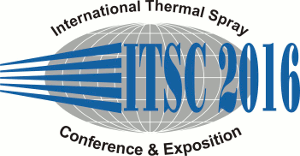
|
4745 |
|
Thursday, May 12, 2016, Room 3E 12:00 PM Corrosion Protection |
|
Thermally sprayed coatings for ultrasupercritical steam power plants |
|
Francesco Bozza / Turbocoating S.p.a., Italy Nelso Antolotti / Turbocoating S.p.a., Italy Martin Thoma/ MT Consulting, Germany Enea Ghidini/ Turbocoating S.p.a., Italy Luca Tagliaferri*/ Turbocoating S.p.a., Italy |
|
Clean and cost-effective power generation has been a challenge over the past decades. To reach the most recent standards, new steam power plants have been designed. In particular, new ultrasupercritical (USC) power plants were developed to improve the efficiency of the already existing supercritical power plants. At the same time, the new regulations for the reduction of CO2 emissions led to the introduction of the oxy-fuel combustion concept in the new steam power plants. These new systems work under more severe conditions than supercritical power plants. As a consequence, the materials currently employed for steam- and fire-side are no more able to withstand the new operating atmosphere. For this reason, new base materials and/or coating solutions for high temperature and corrosion resistance are required. The aim of the present work, carried out under the EU funded project POEMA, was to investigate the long-term high-temperature behavior of protective coatings in simulated USC and oxy-fuel conditions. Specifically, this new high-temperature test was carried out to evaluate the most promising coatings, selected among different protective systems after several screening tests performed within the consortium. ZrO2 and M-CrAlY coatings have been deposited by High-Velocity-Oxygen-Fuel and Air-Plasma-Spray onto austenitic and ferritic steel substrates (HR3C and P92). The high-temperature behavior of those systems was evaluated by means of long-term isothermal tests and cyclic-oxidation tests, whereas the fire-side corrosion resistance was determined under new defined steam and oxy-combustion conditions. The best performing coatings were then applied on real parts. |